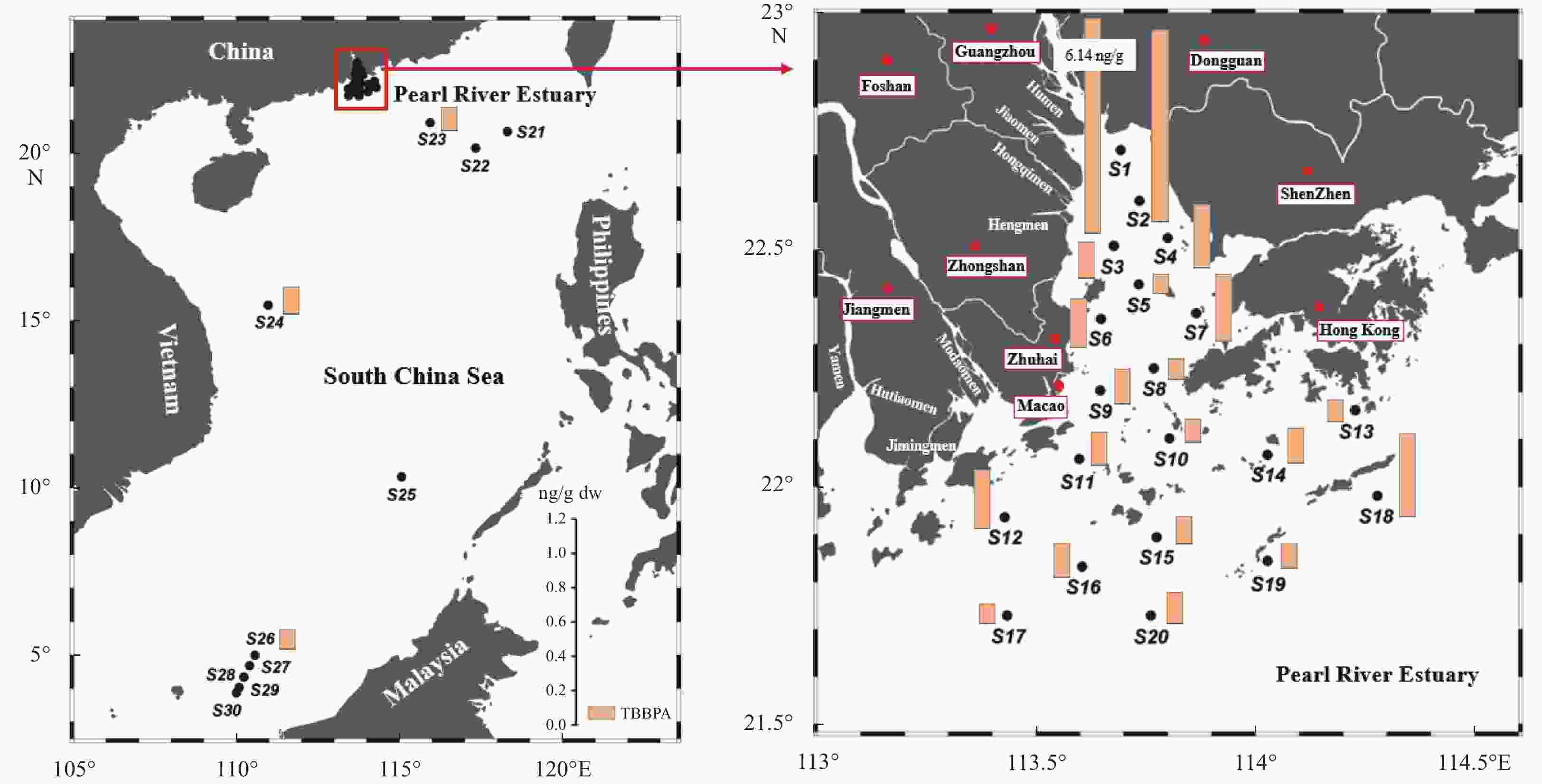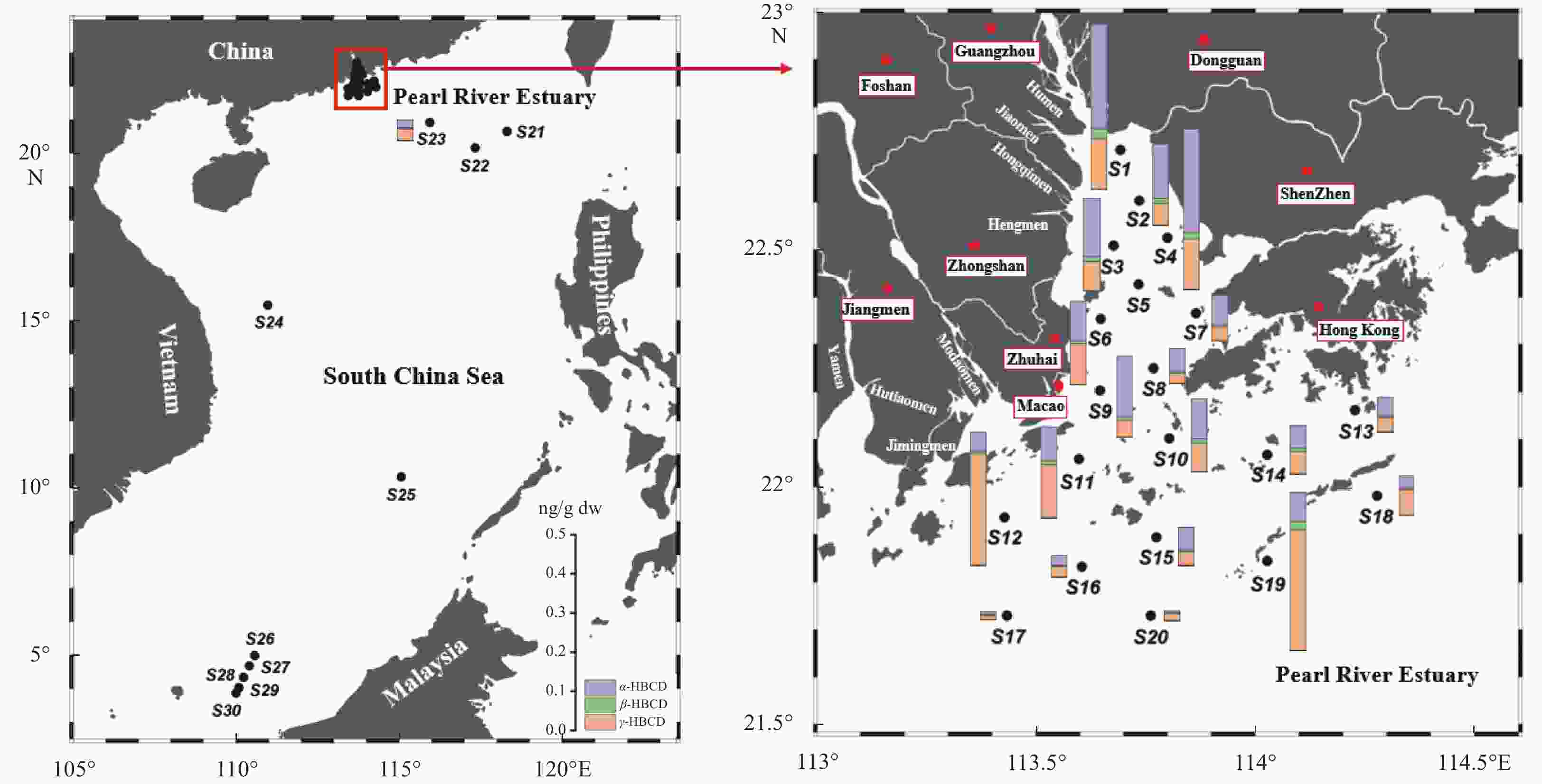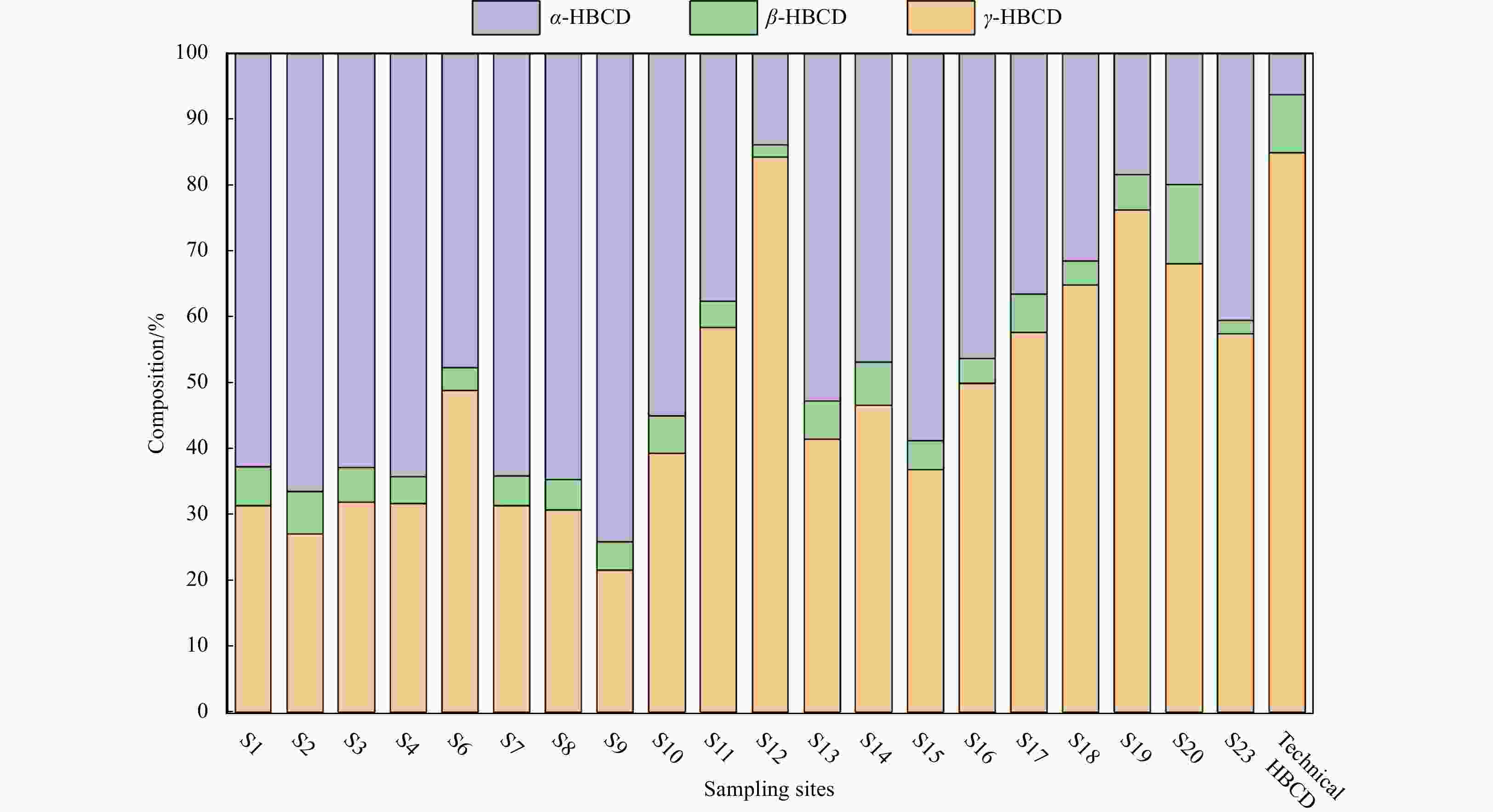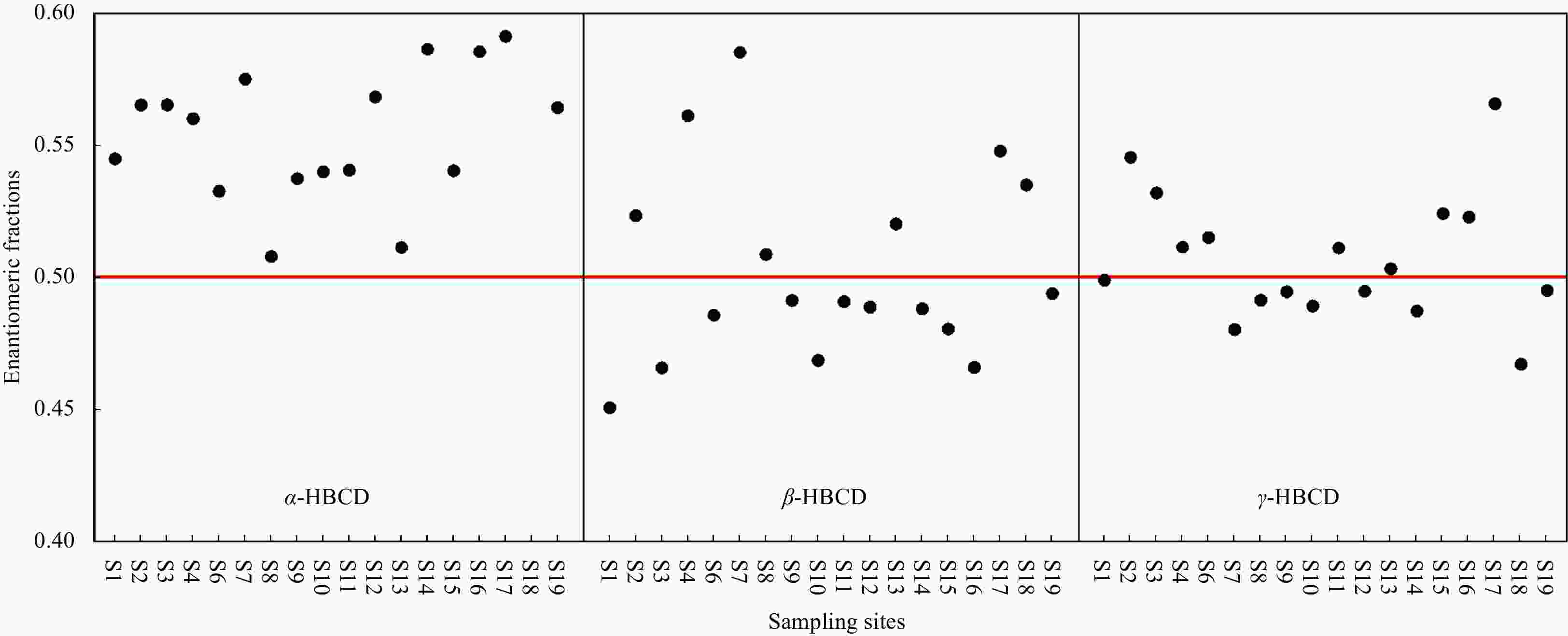|
Abdallah M A E. 2016. Environmental occurrence, analysis and human exposure to the flame retardant tetrabromobisphenol-A (TBBP-A)-A review. Environment International, 94: 235–250. doi: 10.1016/j.envint.2016.05.026
|
|
Avellan A, Duarte A, Rocha-Santos T. 2022. Organic contaminants in marine sediments and seawater: A review for drawing environmental diagnostics and searching for informative predictors. Science of the Total Environment, 808: 152012. doi: 10.1016/j.scitotenv.2021.152012
|
|
Baek SY, Lee S, Kim B. 2017. Separation of hexabromocyclododecane diastereomers: Application of C18 and phenyl-hexyl ultra-performance liquid chromatography columns. Journal of Chromatography A, 1488: 140–145. doi: 10.1016/j.chroma.2017.01.047
|
|
BSEF. 2020. TBBPA in electrical & electronic equipment: An overview. https://www.bsef.com/wp-content/uploads/2020/07/BSEF-TBBPA-Brochure_Digital.pdf[2020-07-11/2023-03-11]
|
|
Cao Xianghui, Lu Yonglong, Zhang Yueqing, et al. 2018. An overview of hexabromocyclododecane (HBCDs) in environmental media with focus on their potential risk and management in China. Environmental Pollution, 236: 283–295. doi: 10.1016/j.envpol.2018.01.040
|
|
Chokwe T B, Okonkwo J O, Sibali L L, et al. 2015. Alkylphenol ethoxylates and brominated flame retardants in water, fish (carp) and sediment samples from the Vaal River, South Africa. Environmental Science and Pollution Research, 22(15): 11922–11929. doi: 10.1007/s11356-015-4430-x
|
|
Davis J W, Gonsior S J, Markham D A, et al. 2006. Biodegradation and product identification of [14C]hexabromocyclododecane in wastewater sludge and freshwater aquatic sediment. Environmental Science & Technology, 40(17): 5395–5401. doi: 10.1021/es060009m
|
|
Feng Anhong, Chen Shejun, Chen Manying, et al. 2012. Hexabromocyclododecane (HBCD) and tetrabromobisphenol A (TBBPA) in riverine and estuarine sediments of the Pearl River Delta in southern China, with emphasis on spatial variability in diastereoisomer- and enantiomer-specific distribution of HBCD. Marine Pollution Bulletin, 64(5): 919–925. doi: 10.1016/j.marpolbul.2012.03.008
|
|
Gao Chongjing, Xia Linlin, Wu Chenchou, et al. 2019. The effects of prosperity indices and land use indicators of an urban conurbation on the occurrence of hexabromocyclododecanes and tetrabromobisphenol A in surface soil in South China. Environmental Pollution, 252: 1810–1818. doi: 10.1016/j.envpol.2019.06.128
|
|
Han Dongmei, Currell M J. 2017. Persistent organic pollutants in China's surface water systems. Science of the Total Environment, 580: 602–625. doi: 10.1016/j.scitotenv.2016.12.007
|
|
He Mingjing, Luo Xiaojun, Yu Lehuan, et al. 2013. Diasteroisomer and enantiomer-specific profiles of hexabromocyclododecane and tetrabromobisphenol A in an aquatic environment in a highly industrialized area, South China: Vertical profile, phase partition, and bioaccumulation. Environmental Pollution, 179: 105–110. doi: 10.1016/j.envpol.2013.04.016
|
|
Hu Yongxia, Pei Nancai, Sun Yuxin, et al. 2019. Halogenated flame retardants in mangrove sediments from the Pearl River Estuary, South China: Comparison with historical data and correlation with microbial community. Chemosphere, 227: 315–322. doi: 10.1016/j.chemosphere.2019.04.075
|
|
Koch C, Schmidt-Kötters T, Rupp R, et al. 2015. Review of hexabromocyclododecane (HBCD) with a focus on legislation and recent publications concerning toxicokinetics and -dynamics. Environmental Pollution, 199: 26–34. doi: 10.1016/j.envpol.2015.01.011
|
|
Li Huawei, Hu Yongxia, Sun Yuxin, et al. 2019. Bioaccumulation and translocation of tetrabromobisphenol A and hexabromocyclododecanes in mangrove plants from a national nature reserve of Shenzhen City, South China. Environment International, 129: 239–246. doi: 10.1016/j.envint.2019.05.034
|
|
Li Huawei, Zhang Zaiwang, Sun Yuxin, et al. 2021. Tetrabromobisphenol A and hexabromocyclododecanes in sediments and biota from two typical mangrove wetlands of South China: Distribution, bioaccumulation and biomagnification. Science of the Total Environment, 750: 141695. doi: 10.1016/j.scitotenv.2020.141695
|
|
Ministry of Ecology and Environment of the People’s Republic of China. 2021. Notice on the implementation of the Stockholm Convention on Persistent Organic Pollutants prohibiting the production and use of hexabromocyclododecane (in Chinese). https://www.mee.gov.cn/xxgk2018/xxgk/xxgk06/202106/t20210608_836846.html[2021-06-08/2023-03-16]
|
|
POPRC-8/3. 2013. Hexabromocyclododecane. Secretariat of the Stockholm Convention. http://www.pops.int/TheConvention/POPsReviewCommittee/ReportsandDecisions/tabid/3309/Default.aspx[2013-11-06/2023-03-18]
|
|
Ruan Yuefei, Lam J C W, Zhang Xiaohua, et al. 2018. Temporal changes and stereoisomeric Compositions of 1, 2, 5, 6, 9, 10-Hexabromocyclododecane and 1, 2-Dibromo-4-(1, 2-dibromoethyl)cyclohexane in marine mammals from the South China Sea. Environmental Science & Technology, 52(5): 2517–2526. doi: 10.1021/acs.est.7b05387
|
|
Sanganyado E, Chingono K E, Gwenzi W, et al. 2021. Organic pollutants in deep sea: Occurrence, fate, and ecological implications. Water Research, 205: 117658. doi: 10.1016/j.watres.2021.117658
|
|
Sanganyado E, Rajput I R, Liu Wenhua. 2018. Bioaccumulation of organic pollutants in Indo-Pacific humpback dolphin: A review on current knowledge and future prospects. Environmental Pollution, 237: 111–125. doi: 10.1016/j.envpol.2018.01.055
|
|
Sun Yuxin, Luo Xiaojun, Mo Ling, et al. 2012. Hexabromocyclododecane in terrestrial passerine birds from e-waste, urban and rural locations in the Pearl River Delta, South China: levels, biomagnification, diastereoisomer- and enantiomer-specific accumulation. Environmental Pollution, 171: 191–198. doi: 10.1016/j.envpol.2012.07.026
|
|
Xiong Ping, Yan Xueting, Zhu Qingqing, et al. 2019. A review of environmental occurrence, fate, and toxicity of novel brominated flame retardants. Environmental Science & Technology, 53(23): 13551–13569. doi: 10.1021/acs.est.9b03159
|
|
Yu Yunjiang, Yu Ziling, Chen Haibo, et al. 2019. Tetrabromobisphenol A: Disposition, kinetics and toxicity in animals and humans. Environmental Pollution, 253: 909–917. doi: 10.1016/j.envpol.2019.07.067
|
|
Zhang Yueqing, Lu Yonglong, Wang Pei, et al. 2018. Transport of Hexabromocyclododecane (HBCD) into the soil, water and sediment from a large producer in China. Science of the Total Environment, 610–611: 94–100. doi: 10.1016/j.scitotenv.2017.08.039
|
|
Zhou Hui, Yin Nuoya, Faiola F. 2020. Tetrabromobisphenol A (TBBPA): A controversial environmental pollutant. Journal of Environmental Sciences, 97: 54–66. doi: 10.1016/j.jes.2020.04.039
|
|
Zhu Bingqing, Lam J C W, Lam P K S, 2018. Halogenated flame retardants (HFRs) in surface sediment from the Pearl River Delta region and Mirs Bay, South China. Marine Pollution Bulletin, 129(2): 899–904,
|

 点击查看大图
点击查看大图




 下载:
下载:




